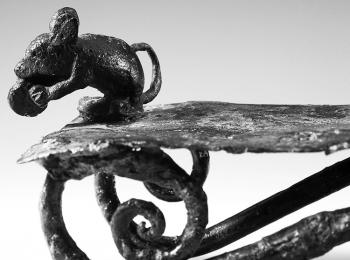American Journal of Archaeology | The Journal of the Archaeological Institute of America
You are here
The Bronze Mice of Apollo Smintheus
October 2014 (118.4)
The Bronze Mice of Apollo Smintheus
Hellenistic-Roman bronze mouse statuettes have traditionally been connected to the god Apollo Smintheus, who appears in the opening scenes of the Iliad and who was venerated in Asia Minor. A careful examination of their findspots and the dating of the statuettes show that this association is erroneous. In fact, the mouse statuettes were attached to bronze oil lamps, candelabra, lampstands, and other pieces of furniture. They refer directly to the common problem of mice gnawing at wicks and drinking lamp oil, a nuisance that is documented in various ancient texts. Mice were a popular motif that not only created a trompe l’oeil effect but also invoked Hellenistic and Roman literary and artistic traditions of an inverted world in which mice undertook human activities that were out of proportion to their small size.
The Bronze Mice of Apollo Smintheus
By Philip Kiernan
American Journal of Archaeology Vol. 118, No. 4 (October 2014), pp. 601–625
DOI: 10.3764/aja.118.4.0601
© Archaeological Institute of America


